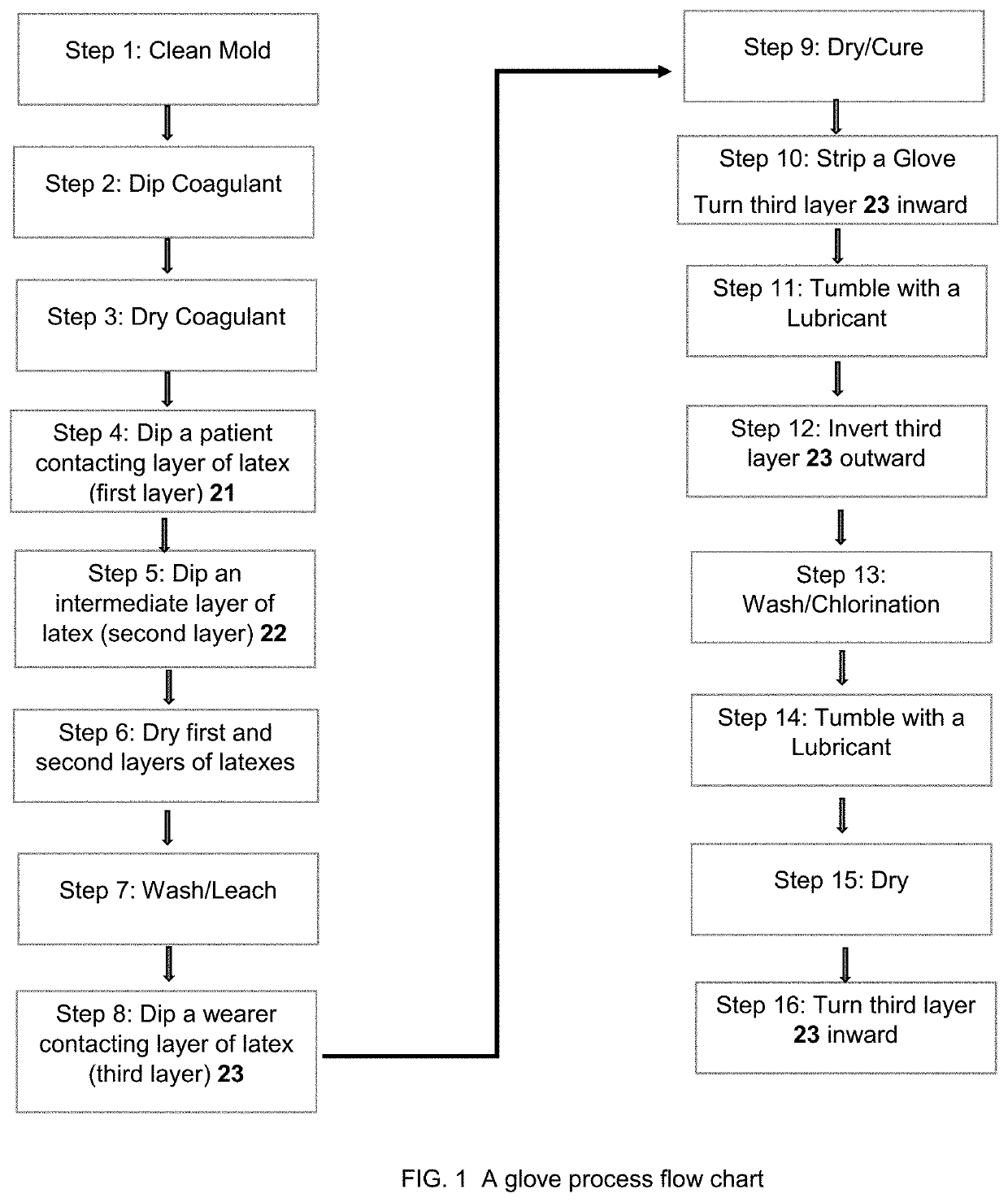Multilayered elastomeric articles and methods thereof
a technology of elastomeric articles and elastomeric gloves, which is applied in the direction of synthetic resin layered products, surgery, other medical devices, etc., can solve the problems of gloves that cannot be removed from molds, gloves that are difficult to adhere to themselves, and gloves that are difficult for surgeons to wear
- Summary
- Abstract
- Description
- Claims
- Application Information
AI Technical Summary
Benefits of technology
Problems solved by technology
Method used
Image
Examples
Embodiment Construction
[0017]In accordance with the present invention, a preferred embodiment is a surgeon's glove formed on the surface of a mold. The glove molds are typically cast for the right and the left hand shapes and made in a variety of hand sizes from small to large. The molds are preferably made of ceramic, most preferably porcelain with a bisque or glazed surface finishing, but other materials such as stainless steel, glass, hardwoods, and plastic may also be used.
[0018]FIG. 1 illustrates a process flow diagram of one embodiment of the present invention.
[0019]FIG. 2A shows a perspective view of a finished glove 2 with line A-A for a sectional view in FIG. 2B.
[0020]The porcelain molds are cleaned in Step 1 in a bath with aqueous sodium hypochlorite about 2 to 6% and then rinsed with water about 120 to 150° F. The rinsed molds are then dipped in Step 2 in a coagulant about 110-160° F. Suitable coagulants include, but are not limited to, calcium nitrate, calcium chloride, acetic acid, magnesium ...
PUM
| Property | Measurement | Unit |
|---|---|---|
| pH | aaaaa | aaaaa |
| temperature | aaaaa | aaaaa |
| pH | aaaaa | aaaaa |
Abstract
Description
Claims
Application Information
 Login to View More
Login to View More - R&D
- Intellectual Property
- Life Sciences
- Materials
- Tech Scout
- Unparalleled Data Quality
- Higher Quality Content
- 60% Fewer Hallucinations
Browse by: Latest US Patents, China's latest patents, Technical Efficacy Thesaurus, Application Domain, Technology Topic, Popular Technical Reports.
© 2025 PatSnap. All rights reserved.Legal|Privacy policy|Modern Slavery Act Transparency Statement|Sitemap|About US| Contact US: help@patsnap.com



